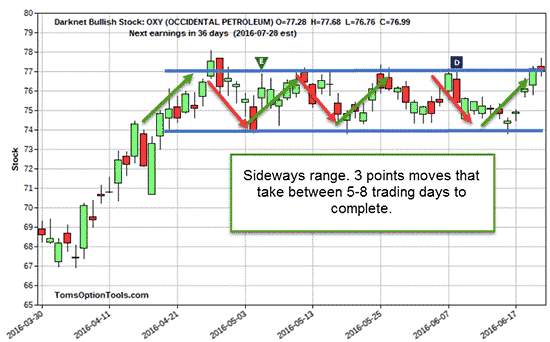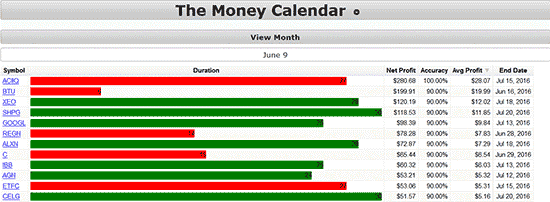I've spent more than 30 years teaching a diverse group of people of all backgrounds and experience levels how to trade profitably, whether they're making a bid for extra income, or financing new purchases, or planning for retirement.
As different as all these folks are, there's one constant they have in common that consistently thwarts the otherwise totally promising trades they've got on.
Emotion... More than any source of volatility that can throw markets into a tailspin, emotion is the killer. It forces people to walk - no, make that run - away from generous upside, or sends them hurtling into the path of steep losses.
And it's all the more tragic because it simply doesn't have to happen. That's right: These events aren't inevitable fate, they're mistakes.
But the good news is there are two steps to take to make sure these kinds of mistakes never happen. Even if you've already fallen victim to emotion in your trades, there's no need to do it again.
This technique is as simple as it is effective.
How Managing Trading Expectations Conquers Emotion
Avoiding emotional mistakes is a simple matter of management. Good management can help you make better trades and avoid that profit-killing emotional reaction to what you're seeing in the markets.
Both of these are absolutely crucial to making money and preserving your capital. But options traders too often end up angry when making money - or happy when losing money - because they didn't take the time to do these two things before opening their trades.
So here's how you can avoid making these same mistakes again...
Trade Management Basics No. 1: Establish a Price Target First
Let's look at a hypothetical, but very common, setup...
Suppose you go long on a stock you believed would move higher. Lo and behold, the stock bounces three points higher three days later. So you decide to take your profits and close out your trade... only to see the stock jump another three points over the next couple days. It was only three days ago that you were happy with your trade. And now you're mad. It's perfectly natural; you feel like you walked out on upside and missed the boat.
But, if you had a reasonable expectation of what the stock would actually do before you opened the trade, a target, in other words, it's likely you would have held on through that three-point bounce and bagged even more profits when the stock moved higher still.
That's why it's best to establish your price target first. And you can do this easily by looking at a stock's past price moves and patterns and eyeballing the time frames in which the price moves happened. This can serve as your guide going into a trade, setting you up for more profits and saving you the frustration and anger.
Here's an example...
This sideways-trading pattern shows three-point moves and the time frames needed to make them. If you were to open a long call option when the stock is on support at $74, you now know that the trade should be closed if and when the stock moves to $77.
[mmpazkzone name="in-story" network="9794" site="307044" id="137008" type="4"]
Additionally, this helps you know that if the stock breaks and/or closes below the $74 support, you've got your signal to exit your position. You're virtually able to see whether or not your trade is working based on the assessment of the price move you need and the time frame in which you need it to move.
The question is... how many charts, like the one below on OXY, would you have to cycle through just to find this information? It could easily take you an hour or more to go through multiple charts one by one, and you may eventually get to the point where you end up doing nothing but technical analysis.
So you want to make sure you're using the most efficient systems and processes to get this information. I have my own proprietary tools, like Money Calendar, that crunch millions of data points to kick out a list that shows a stock's average profit and price moves as well as the time frame needed to get there.
Below is an example:

And as you can see, this provides the opportunity to know what to expect from the stock or ETF - before spending a single cent.
Trade Management Basics No. 2: Set a Strict Time Frame to Reach the Target
Establishing the time frame in which you expect to reach your price target is so important because it prevents you from taking an option position that will expire before the end date, or by the date at which you expect that price move to happen.
Another reason to establish the time frame is so you don't buy too much time on your option because, as we've seen before, time can be pretty expensive.
Here's what I mean...

If you expect a price move to happen in 15 days (by July 14, 2016) on Alphabet Inc. (Nasdaq: GOOGL), as in the example above, why would you need tobuy an option with a January 2017 expiration?
Of course, you want to give yourself enough time for the trade to work. However, if the stock hasn't reached your target price by the end date (July 14), you should probably close your trade and either take whatever gains you can, or, in the worst case, preserve your capital.
Think about it... There's no data that shows what that stock can, or should, do past that date. To hold it until, say, January 2017 means that you're back to holding a trade based on the assessment of your hope that it will go higher. You're trading on deadly, intoxicating "hopium," which is exactly what you don't want to do.
Instead, try using the standard, third-Friday-of-the-month expiration, which is what I try to do. If that pushes you out to the next month, see if there's a weekly option with a Friday expiration shortly after the target date that shows a nice rate of return.
And remember...
The key to successfully managing your options trades is to reasonably manage your expectations. So long as you have a reasonable set of expectations before spending your first dime on a trade, you can avoid the emotional mistakes that options traders make every single day.
Always plan your trade and trade your plan!
Follow Tom on Facebook and Twitter.
It’s Perhaps the Easiest Investing Strategy Ever Invented: You make one simple move on Monday. You exit that same move before Friday’s closing bell. With a unique move that’s guaranteed, by law, to pay out all available closing profits that same day. You never need more than $500 to get started. And the results show this remarkably simple method can beat the markets by 10, 20, 30, even 50 to 1. To see how you can take full advantage, starting this week, click here now.
About the Author
Tom Gentile, options trading specialist for Money Map Press, is widely known as America's No. 1 Pattern Trader thanks to his nearly 30 years of experience spotting lucrative patterns in options trading. Tom has taught over 300,000 traders his option trading secrets in a variety of settings, including seminars and workshops. He's also a bestselling author of eight books and training courses.



